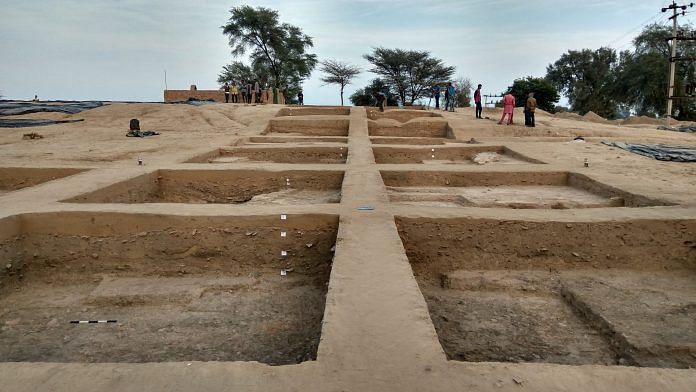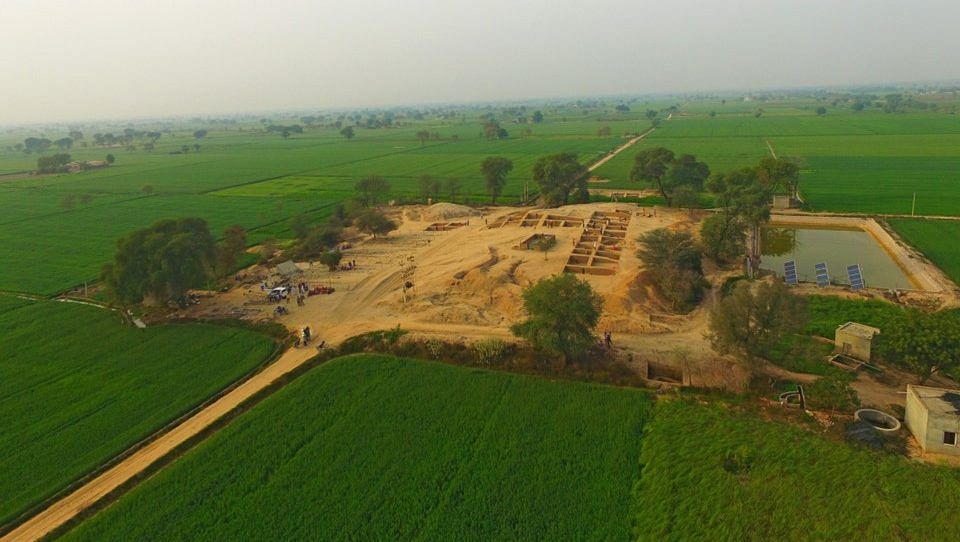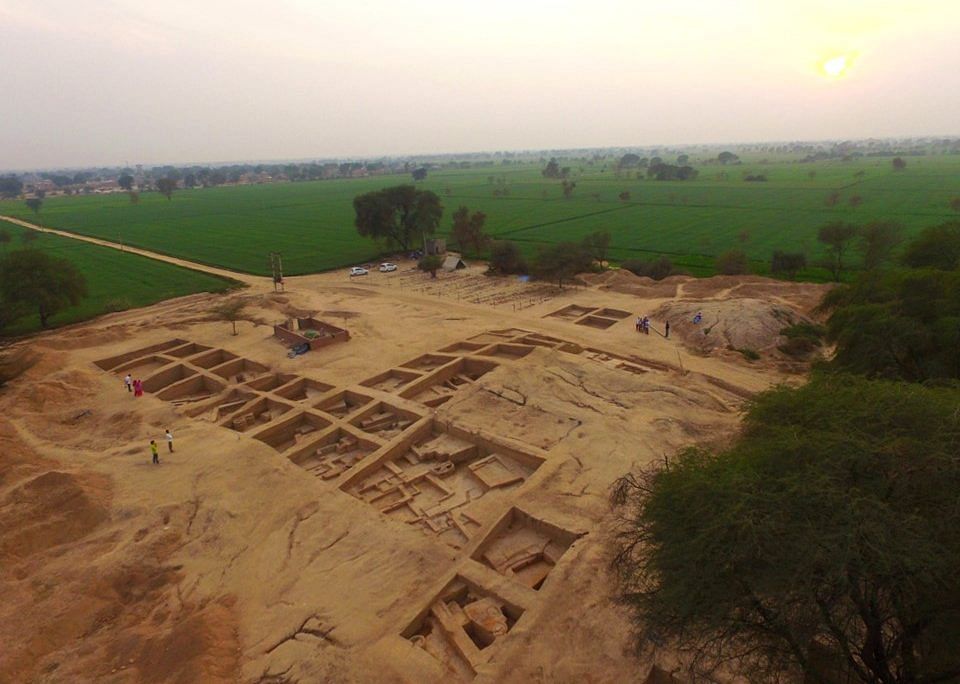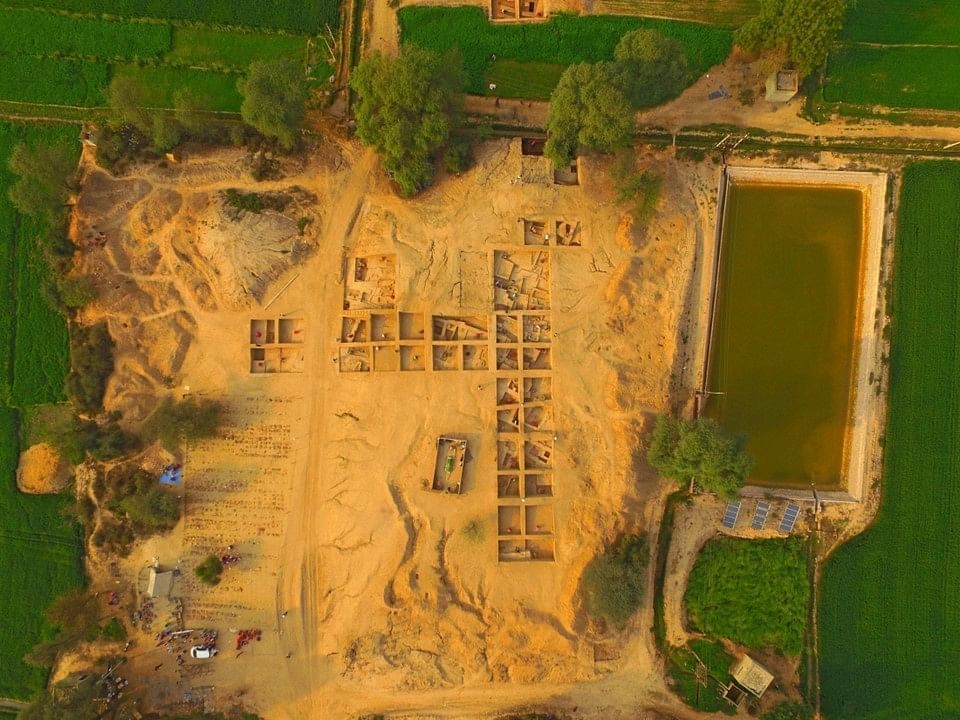Anthropology
Related: About this forum5,000-yr-old industrial hub--Binjor excavation shatters myths about ancient Indian manufacturing
The science used in manufacturing during ancient times have put not just the Harappans but also present-day India on the map as a leading producer of cotton, beads, and copper objects.
Disha Ahluwalia
DISHA AHLUWALIA
22 April, 2024 10:15 am IST

The excavated site Binjor (4MSR), very close to Tarkhanwala Dera and Baror, in Rajasthan, where a craftsperson’s village was discovered | Photo: Disha Ahluwalia | ThePrint
Known as the world explorers and traders, the Harappans were the ancient Indian mercantile community that flourished from the existing farming society in the third millennium BCE, roughly 5000 years ago. Besides their identity as traders, the people of the Harappan Civilisation were also producers. Supply, production, and distribution were all aspects of a well-designed matrix that united the Makran coast in the west to the Yamuna River in the east, and the Himalayas to western India. Eventually, the rise of trade ushered in the first urbanisation, which lasted six to seven hundred years before the cities collapsed.
Though the tale of the rise and fall of urbanisation is narrated many times, along with their economic accomplishments, the nature of production and manufacturing is rarely presented as a storyline in itself. The nature of production by the Harappans is as enigmatic and fascinating as the nature of their extensive and long-distance trading matrix. The science of making high tin bronze using an age-old lost wax technique, the science of bead making (lapidary) which is over a 5000-year-old practice, the science of pottery making, or the textile industry, especially cotton, are some techniques and practices that have put not just the Harappans but also present-day India on the map as a leading producer of cotton, beads, and copper objects.
In over a century of excavation of Harappan sites and studying the remains, a full-fledged settlement dedicated to production and craftsmanship is rare. At metropolises – Harappa, Mohenjodaro, Rakhigarhi, or Dholavira – archaeologists unearthed workshops – craft centres which have provided data that has helped in understanding the backbone of the trade matrix we all know. Besides major cities, workshops and industrial/craft centres were also found in rural (or semi-rural) settlements as well. On the banks of the Ghaggar alone, in present-day Rajasthan, at Tarkhanwala Dera, Baror, and even at Kalibangan, kilns and workshops were unearthed. However, at Binjor (4MSR), very close to Tarkhanwala Dera and Baror, a craftsperson’s village was discovered, which provided an overview of the lives of metallurgists and craftspeople, thus unlocking the unknown aspects of the production line of the mighty Harappans.



Aerial view of the site, Binjor 4MSR | Photos: Archaeological Survey of India
Binjor (4MSR)
About 4 km away from the India-Pakistan border that divides the Ghaggar-Hakkra river, in the Anupgarh tehsil of Sri Ganganagar district of Rajasthan, is a site that brought to light the unknown facet of Harappan culture. Binjor is an archaeological site located in village 4(MSR). This site was reported by A Ghosh in his famous exploration of Rajputana in 1950-52, where he mentions four mounds, namely Binjor 1, Binjor 2, Binjor 3 and Binjor 4. Katy Dalal set up a trail trench at Binjor 3 and noticed Pre-Harappan deposits at a depth of 1.75m in the 1970s. With time, only one mound known as Binjor (4MSR) remained, which was excavated by Sanjay Manjul and Arvin Manjul of the Archaeological Survey of India in 2014-17 for three field seasons, bringing to light threefold cultural deposits:
- Pre/Early Harappan
- Transitional Phase of Early to Mature Harappan
- Mature to Late Mature Harappan
More:
https://theprint.in/opinion/5000-yr-old-industrial-hub-binjor-excavation-shatters-myths-about-ancient-indian-manufacturing/2050794/
Bayard
(24,145 posts)Thanks, Judi Lynn!